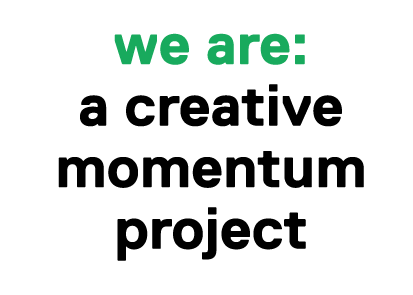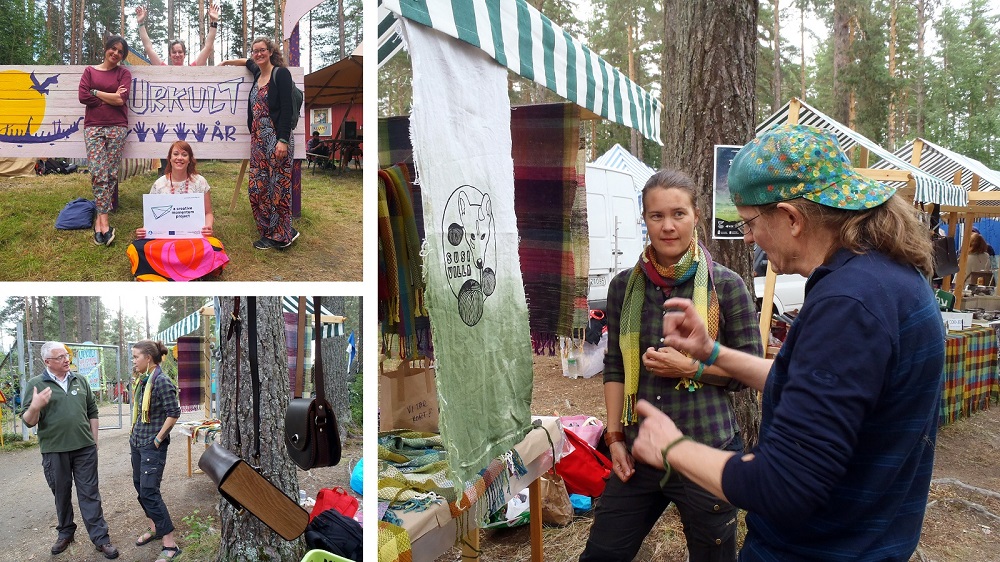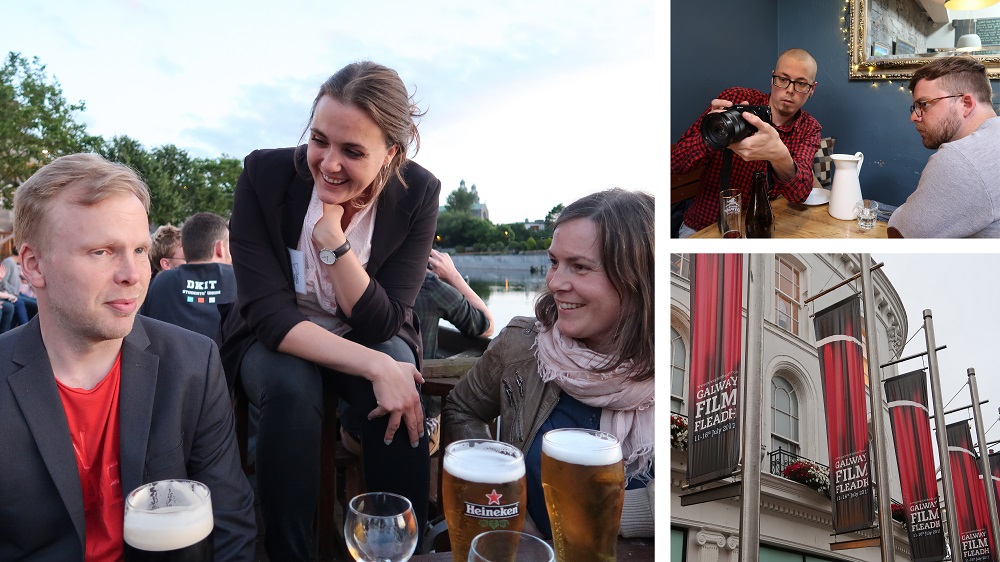‘a creative momentum project’ developed and implemented ‘The Creative Hotspots Model’ during 2015-2017. Our aim was to facilitate face-to-face transnational networking and knowledge exchange among creative sector entrepreneurs, while bringing an added international dimension to existing creative sector events in the partner regions. We’ve just published a new report ‘Creative Hotspots: A Model for Building Transnational Connections through Established Creative Events‘ charting our experience and what we learned along the way.
A ‘Creative Hotspot’ is a general term used by us to describe an established creative or cultural industry event (conference, festival etc.) which takes place in one of the five partner regions. The ‘Creative Hotspots Model’ involved the following process:
Step 1: Select Creative Hotspots – agree criteria for a ‘Creative Hotspot’; compile a database of events in each region; select 1 Creative Hotspot to be supported in each region.
Step 2: Select Participants – the project partner organisation in the region where the Creative Hotspot takes place meets with event organisers and agrees the nature of project participation; an open call for applications from relevant creative professionals promoted in all other partner regions; a number of suitable participants selected from each ‘sending’ region.
Step 3: Make Arrangements for Participation – the ‘sending’ partner organisations make travel and accommodation bookings and liaise with participants; the ‘host’ organisation works with event organisers and if appropriate arranges a ‘Creative Exchange’ networking event.
Step 4: The Creative Hotspot – participants and project staff from ‘sending’ regions travel to the Creative Hotspot; ‘Creative Exchange’ is held; the transnational group of participants take part in the Creative Hotspot and networking opportunities; experience is documented with video/photos.
Step 5: Follow-up – all participants complete feedback form, submit short report and complete State Aid documents; media releases issued in ‘host’ and ‘sending’ regions; articles about experience published on MyCreativeEdge.eu and promoted on social media
Steps 2-5 are repeated for each of the five Creative Hotspots.
In total 49 creative professionals from five regions (the initial target was 37) were supported to participate in the following five Creative Hotspots:
- Swedish Creative Hotspot: Urkult Folk Festival 2016
- Northern Irish Creative Hotspot: Digital DNA @ The Planetarium 2016
- Finnish Creative Hotspot: Arctic Design Week 2017
- Icelandic Creative Hotspot: Vaka Folk Arts Festival 2017
- Irish Creative Hotspot: Galway Film Fleadh 2017
Lessons Learned
Some of the key lessons learned from the experience of developing and implementing the Model may be useful for others considering implementing a similar approach.
One Size Does Not Fit All: A single ‘Creative Hotspots Model’ does not work for all creative sub-sectors, events or organisations. The Model needs to be adapted and adjusted for each specific Creative Hotspot.
Does ‘Hotspot’ have Meaning? When compiling the database and selecting the five Hotspots to support, the question arose if any of them truly met all the criteria for a ‘Creative Hotspot’. Ultimately there were few options that came close to meeting all the criteria for selection. One of the challenges of more remote and sparsely populated regions is the shortage of truly international ‘Creative Hotspots’. The objective of the Model to strengthen the international dimension of existing creative events in the partner regions should perhaps have received greater focus.
Awareness of Event/Format: If a small, unknown Hotspot is selected, this creates the double task of raising awareness of the Festival/Event, as well as promoting the opportunity to participate. Events with a higher international profile are easier to promote, but an aim of the project is to strengthen smaller events.
Nature of Event: Hotspots which are voluntary/community-driven and not run on a commercial basis can create some challenges in organising cooperation and participation.
Logistics: Organising the logistics of participation takes considerable time and effort from both the ‘host’ and ‘sending’ project organisations. It is important not to underestimate the commitment involved. They need to have the human, organisational and financial capacity to liaise with event organisers, participants, service suppliers (e.g. freight company, hotels) and media.
Suitability of Participants & Group Dynamics: For some Hotspots it proved difficult to select the most suitable participants, partly because of lack of information about the event and/or because of low numbers of applications. Also joint selection from across all regions might be useful to maximise the group dynamic and compatibility within the transnational group.
Networking & Creative Exchanges: At most Creative Hotspots the majority of attendees are local and may have existing relationships. It can be difficult for ‘outsiders’ to find opportunities to network. Hotspots which include specific, structured networking opportunities as part of the programme are desirable. Organising a Creative Exchange, so that all the supported project participants can network with each other and the local industry can be very beneficial.
We’ve just published a detailed report on the experience of the six ‘a creative momentum project’ partner organisations in implementing ‘The Creative Hotspots Model’. All documents are available in the Knowledge Centre under ‘a creative momentum project Output Reports’. Or download directly:
‘Creative Hotspots: A Model for Building Transnational Connections through Established Creative Events’ (Full Report, PDF 3.5MB)
‘Summary: The Creative Hotspots Model’ (Short Summary of Model and Lessons Learned, PDF 500KB)
‘Creative Hotspots – Sweden Creative Hotspot: Urkult Folk Festival 2016’ (Section of full report on the Swedish Hotspot, PDF 1.3MB)
‘Creative Hotspots – Northern Ireland Creative Hotspot: Digital DNA @ The Planetarium 2016’ (Section of full report on the Northern Irish Hotspot, PDF 1MB)
‘Creative Hotspots – Finland Creative Hotspot: Arctic Design Week 2017’ (Section of full report on the Finnish Hotspot, PDF 1.1MB)
‘Creative Hotspots – Iceland Creative Hotspot: Vaka Folk Arts Festival 2017’ (Section of full report on the Icelandic Hotspot, PDF 1MB)
‘Creative Hotspots – Ireland Creative Hotspot: Galway Film Fleadh 2017’ (Section of full report on the Irish Hotspot, PDF 1MB)





Discussion
You must be logged in to submit comments.
Add your comments here.
Maximum length of 500 characters